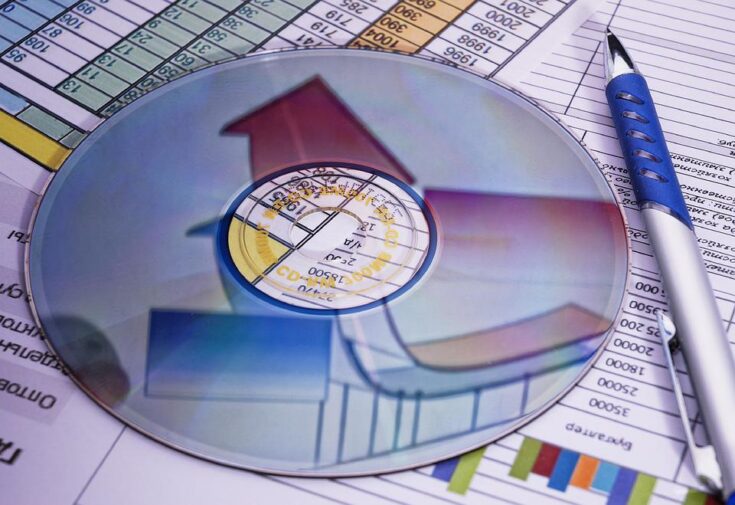To know how to make a financial plan for a self-employment project, we must establish a financial control, a business projection, and a cash flow control.
We evaluate the starting point, investment needs, whether financing sources are necessary, an estimate of profits and losses, and a final cash situation to establish the plan.
What is a self-employment project financial plan?
A financial plan is a tool that allows knowing the complete state of the company’s finances. We can use it for immediate financial control and the company’s economic objectives or strategies.
It is a tool that collects information from the different fields that make up the economic life of the company or project. For all purposes, it is considered the relevant factor in analysing any business project’s economic and financial viability.
How to make a financial plan for a company
When done completely, the financial plan of a company reflects the financial results and the forecasts of the project. Both in the short, médium, and long term.
It is an essential instrument in any phase of a business project, from creation to development. Even in the face of possible economic problems, it represents the basis of the company’s financial situation.
It is necessary to use time and all possible information resources to make a financial plan. At the time of its elaboration will be taken into account for some elements such as:
- Financial control
- The projection of the company’s economy
- Treasury
Steps to take to create a financial plan
Although it can approach a company’s financial plan differently, it is usually done through several steps. In this case, we will focus on the basic conditions a financial plan must-have. These conditions can increase depending on the depth with which you want to provide it:
- Situation analysis: the situation of the company’s economy at the exact point at which the plan is made is assessed, including possible future ones.
- Investment needs analysis: the investment necessary to start, continue or maintain a business project is determined, including all possible aspects to be financed.
- Financing tools: this section includes the sources of financing that will use to develop the previous points. It is usually complemented with an area for the working capital that contemplates the basic funding of the project.
- Profit and loss statement: this is another relevant section where the balance sheet, including assets, liabilities, and obligations, and the profit and loss account and costs will reflect. Depending on the company’s size, it may be presented in two different sections.
- Cash and cash flow: this would be the last section with which to conclude a basic financial plan. It will include both the cash available and the cash flow forecasts. As in the previous section, depending on the size of the company, we can do it on two different points
It is necessary to remember that it is a representation as faithful as possible of the present and future economy of the business project to make the financial plan of a business project.
It is an essential tool for analyzing companies’ viability and economic future.
Debt capacity in self-employment
The debt capacity is the maximum debt limit that a person or family economy can assume without affecting the rest of its finances.
It is an amount determined by the relationship between income and expenses of the person or family. We will deepen in the capacity of indebtedness, its limits, characteristics, and factors such as over-indebtedness.
- Debt capacity is the limit to which a person, or a family economy, can become indebted.
- Although it relates to all debts, debt capacity is generally about financial obligations, with special incidence in loans and financing products.
- Debt capacity is an element of value when, for example, applying for a mortgage from a bank.
What is family over-indebtedness
It is considered that the family over-indebtedness appears when the amount of the debts the family exceeds the limits of its capacity of indebtedness. And therefore, it affects the whole family economy, diverting money from other items to pay the debts.
The over-indebtedness is one of the most serious problems a family economy can go through.
Over-indebtedness on credit
One of the most common forms of excess debt is excessive credit-based borrowing. This indebtedness usually arises from the combination of different financing products and, more specifically, from the excessive use of credit cards as a source of funding. It is considered one of the most destructive patterns of over-indebtedness.
How much debt can a person take on
There is no universal answer since each person, and family situation can increase or decrease the debt limit. Generally, a maximum percentage of indebtedness between 30% and 40% of the monthly net income is good. Net income is the result of subtracting gross income from monthly fixed expenses.
How to allocate the debt capacity
The distribution of the debt capacity will depend on the family’s financial situation. It is not usually advisable to allocate all the debt capacity to a single debt, but this can often be the case with mortgage debt.
Debt capacity is a factor of possibility but not of obligation. Therefore, as long as it is not necessary to acquire a level of indebtedness, we can use this percentage for other financial tasks such as savings or investment.
The level of financial capacity is a tool for determining the extent to which an individual or a family economy can take on debt.
It is a measure to control the health of personal finances, which influences aspects such as access to funding. We analyze the keys to understanding how debt capacity is determined, how it affects, and where to place its limits.


